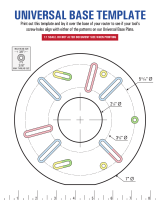
MIXED MEDIA 10
To use Mixed Media in Command WorkStation, your downloaded file must be a non-raster
file. To remove raster information from a file in Command WorkStation, right-click the file
and select Remove Raster Data.
You can duplicate this workflow with a PostScript file instead of a PDF. You can also specify
inserting tabs. For example, instead of specifying heavy media for the chapter dividers, you
can specify tabs and print chapter numbers on each tab. For more information about printing
with tabs, see Utilities.
3
The operator selects the job in Command WorkStation, chooses
Properties from the Actions menu and clicks the Media icon on
the Job Properties toolbar. The operator applies the following
settings:
a) From New Page Range in Mixed Media, the operator types
2, 32, 64, 98, 124 for the page range (the pages that divide
the chapters), specifies a heavy media, indicates which tray
contains the heavy media, clicks Add Definition, and then
clicks Close.
b) From New Insert in Mixed Media, the operator specifies
inserting a blank page after the last page to distinguish the
end of the print job, clicks Insert, and then clicks Close.
c) The operator specifies front and back covers that print on
front only, cover stock, and which tray contains the media,
and then clicks OK (if applicable).
d) The operator clicks the Layout icon and specifies duplex,
clicks OK, and then saves the file.
Utilities
4
The operator processes and holds the job. Command WorkStation Help
5
The operator previews the job. Command WorkStation Help
6
The operator prints the job.
NOTE: The operator can also print one set as a proof before
printing multiple copies.
Command WorkStation Help
7
The operator retrieves the job from the copier.
8
The job is printed with a front and back cover and dividers
for each chapter.
Step Task For more information
























